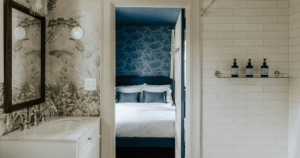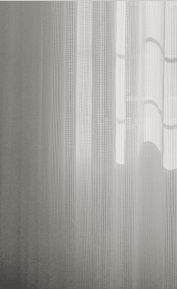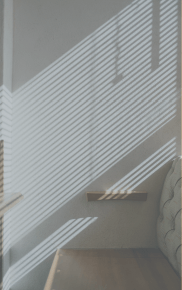
Interior design is heaps of fun. There’s something special about making your space feel amazing. Whether it’s the careful selection of furniture, decor or art, choosing paint palettes or finding the perfect lighting – seeing your vision come to life is the best part of the interior design process. Part of great interior design is matching or contrasting elements in your home, and your bathroom is no exception to this. In today’s blog, we’ll share all about matching your vanity to the rest of your bathroom – so, if you’re interested in this fascinating topic, read on to learn more.
Freestanding or Wall-Hung Vanity?
The first part of this process should be figuring out what type of vanity you have, and if you’re getting a new one, deciding what to pick.
Freestanding vanities are a certain type of vanity unit that you can install in your bathroom. A stylish and practical addition to most modern bathrooms, they offer both visual appeal and functional storage for all your toiletries, and other essential bathroom items. Unlike wall-hung alternatives, which we’ll discuss next, a freestanding vanity isn’t attached to the wall, which allows you greater flexibility in its placement and design. Available in a range of materials, such as classic timber tones such as brown oak or sagewood, and in a wide range of contemporary finishes, a freestanding vanity will suit different interior bathroom design styles, from modern to minimalist. The versatility offered by a freestanding vanity makes them a popular choice for homeowners who are looking for a minor upgrade to their space without the need for major messy and extensive renovations.
Wall-hung vanities, on the other hand, are mounted to the bathroom wall. These are a stylish and practical addition to modern bathrooms, offering an excellent mix of both aesthetic value and functionality. Their floating, wall-mounted design creates a stunning visual illusion of available space, making these ideal for people with smaller bathrooms or if you’re aiming for a minimalist vibe. One benefit of them, is that due to their being mounted on the wall, these vanities allow for easier cleaning underneath them, reducing the build-up of debris and grime that is usually found underneath traditional floor-standing vanities. For those who like pairing practicality and function, they are the perfect choice for you.
Matching Tiling to Vanity
Think about your tile scheme as a complement to your bathroom vanity; it’s vital to consider tile colour, texture, and your overall design harmony. A vanity serves as a centre point in your bathroom, so the tiles should enhance its appearance without overwhelming it.
Colour coordination is key here. A soft white or neutral vanity will pair well with strong and bold or patterned tiles, whereas a darker vanity might look best with lighter, subdued tiles to create a soft contrast. If the vanity has softer wood tones, like natural oak or sagewood you might choose earthy tiles in tones such as warm greys, beige or terracotta which will enhance its organic timber appeal.
Texture and finish also play a role in achieving the right balance when matching your tiling to your vanity. Glossy tiles will reflect light and create a sleek and modern feel, complementing high-gloss vanities. Whereas matte or textured tiles work well with timber vanities for a softer, more natural look. Large feature tiles can create a seamless, contemporary appearance. You might opt for smaller or mosaic tiles to add a touch of intricate detail and character.
Considering your overall bathroom design is just as important when matching your vanity to the rest of your bathroom. If your vanity is a statement piece, neutral tiles will allow it to stand out, whereas if your vanity is pared back and minimalist, a bolder tile choice will add personality.
Paint Palettes
Selecting a paint scheme that complements your bathroom vanity involves crucial balancing of colour, tone, and finish in order to create a cohesive and inviting room. Your bathroom vanity is often a key design feature, so the wall and roof colour should enhance its style instead of competing with it.
For a white or neutral vanity, paint palettes such as soft greys, warm whites, or muted pastels will invoke a fresh and airy vibe. Whereas darker-coloured vanities like the Audrey freestanding vanity in black will pair well with lighter-painted walls to maintain balance, while deep, moody tones like navy or forest green can add a bold touch of drama and sophistication. Timber vanities will work beautifully with earthy paint tones such as warm beige, soft olive, or muted terracotta, which will highlight the natural wood grain.
Tie Your Bathroom Together With the Perfect Vanity Match
Matching your vanity to the rest of your bathroom is about more than just looks—it’s about creating a space that feels cohesive, balanced and uniquely yours. Whether you opt for a freestanding or wall-hung vanity, consider how your tile choices and paint palette will work alongside it to enhance the overall aesthetic. From finishes and colours to layout and function, every decision plays a role in bringing your bathroom design together.
Need help crafting the perfect vanity for your space? Get in touch with Joinery by Bears – experts in custom bathroom joinery designed to complement your vision beautifully.









